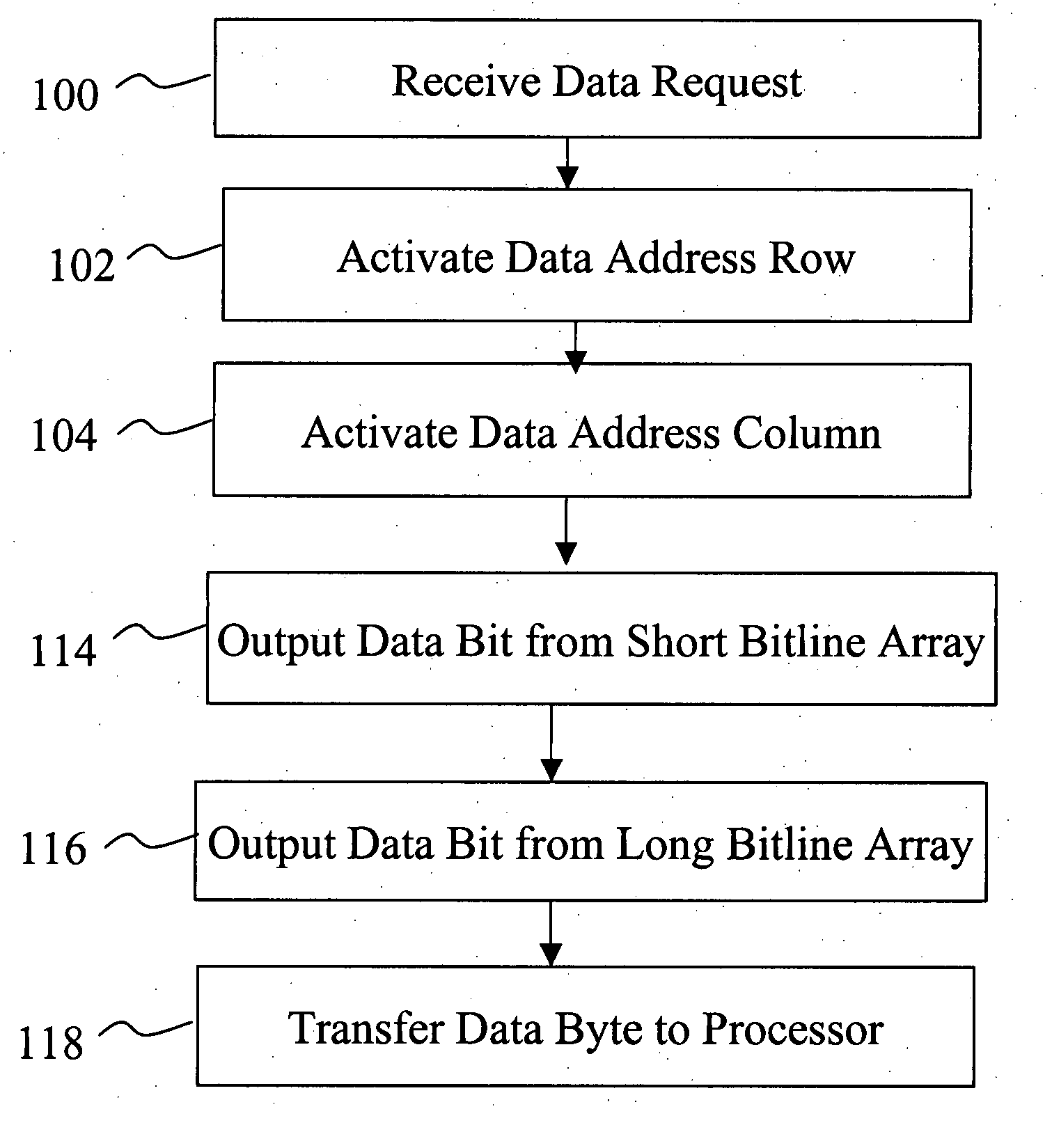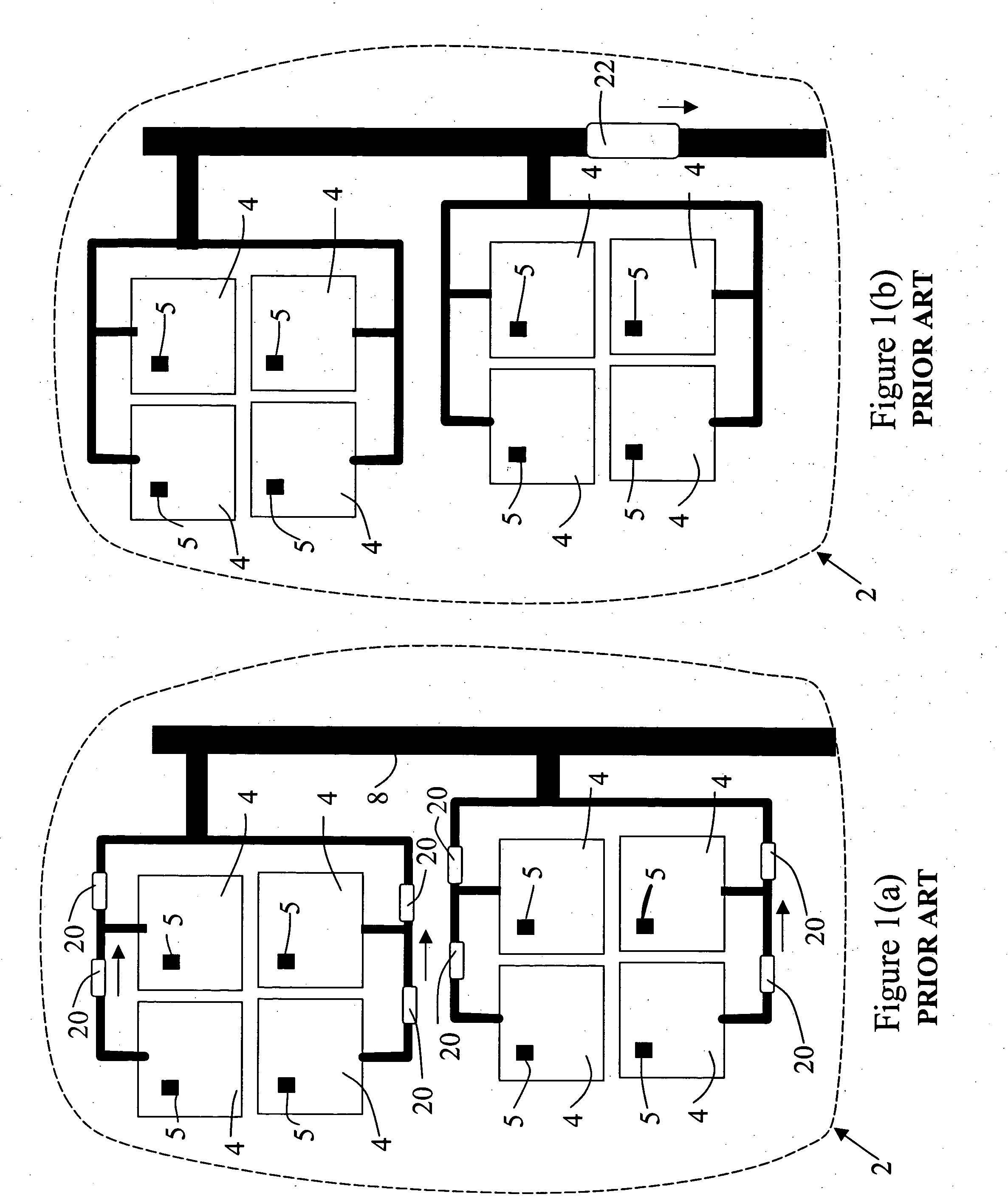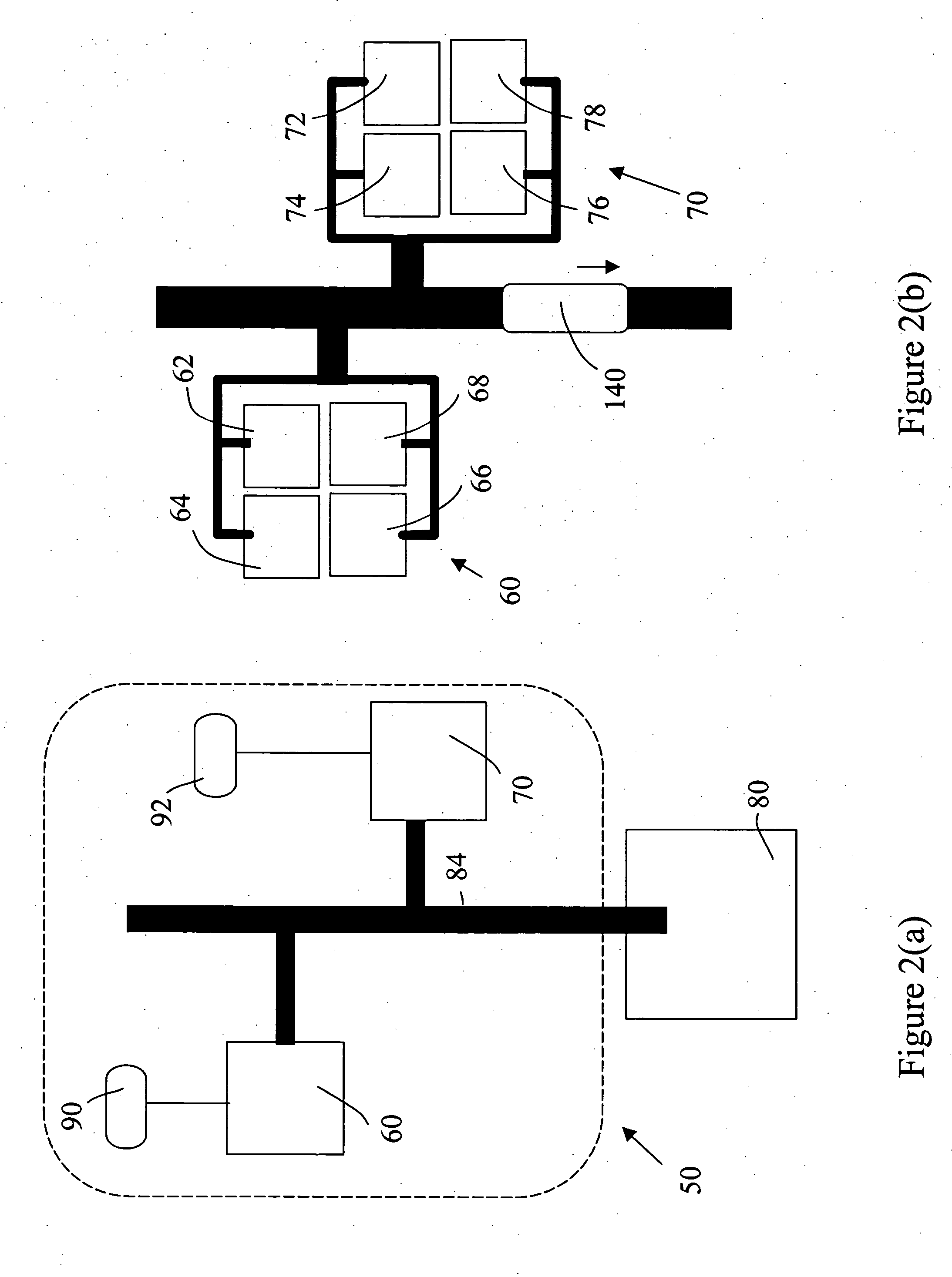System and method for variable array architecture for memories
a memory and array technology, applied in the field of memory circuits, can solve the problems of increasing the density and speed at which dram arrays operate, the potential cost of higher power consumption within a chip, and the inefficient utilization of full chip resources, so as to improve improve the efficiency of memory devices, and reduce the overall power consumption of the operation.
- Summary
- Abstract
- Description
- Claims
- Application Information
AI Technical Summary
Benefits of technology
Problems solved by technology
Method used
Image
Examples
Embodiment Construction
[0023] Before one or more embodiments of the invention are described in detail, one skilled in the art will appreciate that the invention is not limited in its application to the details of construction, the arrangements of components, and the arrangement of steps set forth in the following detailed description or illustrated in the drawings. The invention is capable of other embodiments and of being practiced or being carried out in various ways. For instance, although embodiments disclosed below describe data read operations, embodiments including data write operations are anticipated. In addition, although embodiments refer to manipulation of bits and bytes of data, embodiments employing units of data of a large range of sizes are anticipated. Also, it is to be understood that the phraseology and terminology used herein is for the purpose of description and should not be regarded as limiting.
[0024]FIG. 2(a) illustrates a memory system 50, arranged according to an exemplary embod...
PUM
 Login to View More
Login to View More Abstract
Description
Claims
Application Information
 Login to View More
Login to View More - R&D
- Intellectual Property
- Life Sciences
- Materials
- Tech Scout
- Unparalleled Data Quality
- Higher Quality Content
- 60% Fewer Hallucinations
Browse by: Latest US Patents, China's latest patents, Technical Efficacy Thesaurus, Application Domain, Technology Topic, Popular Technical Reports.
© 2025 PatSnap. All rights reserved.Legal|Privacy policy|Modern Slavery Act Transparency Statement|Sitemap|About US| Contact US: help@patsnap.com



